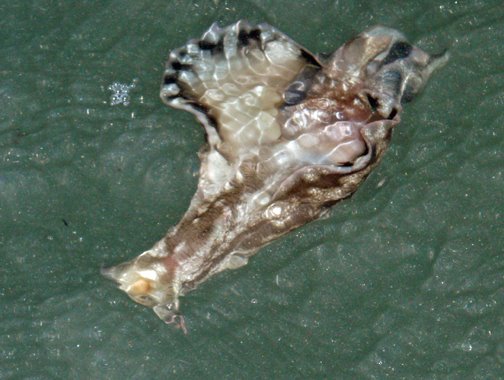Consider the lowly sea hare ...
 My first encounters with sea hares came during my early childhood in Ingleside. My dad delighted in showing me the strange creatures washed-up on the shores of the Gulf Intracoastal Waterway.
My first encounters with sea hares came during my early childhood in Ingleside. My dad delighted in showing me the strange creatures washed-up on the shores of the Gulf Intracoastal Waterway.
Even as they melted in the hot, South Texas sun, they could emit copious amounts of purple ink.
Fascinating, eh?
Much later in life, after a summer watching these critters gracefully and ever-so-slowly dodge anglers, boat wakes and juvenile sea turtles at a Gulf pass near Corpus Christi, it occured to me they look like nothing so much as ... well, camouflaged, swimming vulvas.
Sea slugs -- the "hares" (so-called for their purported resemblence to a sitting rodent) are one type -- are quite common, as it turns out. There are hundreds of species, and they are found in all the world's oceans. They also are quite variable.
Some, like the Aplysia brasiliana (mottled sea hare) pictured above are herbivores, some are carnivores and a few are even able to co-opt chloroplasts from the plants they eat and continue photosynthesis within their own bodies.
Sea hares, like all sea slugs, are mollusks -- related to clams, squid and other such critters. Sea slugs are marine snails (mostly) without shells. Sea hares, unlike their relatives the nudibranchs, retain a vestigal shell within their bodies.
Sea hares are hermaphrodites, each sporting a penis on the right side of the head and a vagina in the mantle cavity. It's a cosmic joke that the critters ... well, they can't quite reach.
Still, the arrangement leads sometimes to a rather freewheeling sex life, with male-female pairings, male-female/male-female ménagerie à trois, female-male/female-male ... oh, you get the picture.
Anyway ... very beautiful animals, especially as they glide through the water.




1 comment:
OMG, "camouflaged, swimming vulvas"? LOL
Post a Comment